Yucatecan cuisine, a rich and diverse culinary tradition from the Yucatan Peninsula in Mexico, offers an array of regional varieties that reflect the cultural heritage and geographical influences of the area. This article explores the unique flavors and ingredients found in Yucatecan cuisine, highlighting its distinct characteristics and showcasing its significance within Mexican gastronomy. Through an examination of one particular example – cochinita pibil, a traditional dish made with marinated pork cooked in banana leaves – this article aims to provide insight into the complex tapestry of flavors and techniques that define Yucatecan cooking.
The Yucatan Peninsula is known for its tropical climate, lush vegetation, and abundant seafood resources, which have greatly influenced the local cuisine. The fusion of Mayan traditions with European and Caribbean influences has resulted in a vibrant culinary landscape that showcases both ancient ingredients and modern adaptations. From spicy habanero peppers to exotic fruits such as pitahaya (dragon fruit), Yucatecan cuisine boasts a wide range of flavors that tantalize the taste buds.
One iconic dish that exemplifies this amalgamation of indigenous roots and foreign influences is cochinita pibil. Originating from Mayan cooking methods, it features slow-cooked pork marinated in citrus juices and achiote paste, a blend of annatto seeds, spices, and vinegar. The pork is traditionally wrapped in banana leaves and cooked underground in a pit known as a pib. This cooking technique infuses the meat with intense flavors and tenderizes it to perfection.
The marinade for cochinita pibil typically includes sour orange juice, which adds a tangy and citrusy note to the dish. Other common ingredients include garlic, oregano, cumin, and black pepper. The addition of achiote paste gives the meat its vibrant red color and imparts a unique earthy flavor.
Once the pork has been marinated for several hours or overnight, it is placed in the banana leaf parcel along with some of the marinade. The package is then tightly sealed and slow-cooked until the meat becomes incredibly tender and flavorful. The result is succulent pieces of pork that are richly infused with the aromatic spices of Yucatecan cuisine.
Cochinita pibil is often served on corn tortillas as tacos or accompanied by rice, beans, and pickled onions. The balance between the spiciness of habanero peppers and the acidity of sour oranges creates a harmonious combination that is both satisfying and refreshing.
Beyond cochinita pibil, Yucatecan cuisine offers many other delicious dishes worth exploring. From sopa de lima (lime soup) made with shredded chicken and fragrant lime juice to papadzules (rolled tortillas filled with egg bathed in pumpkin seed sauce), each dish tells a story about the region’s history and cultural heritage.
In conclusion, Yucatecan cuisine stands out for its diverse range of flavors derived from indigenous traditions and foreign influences. Cochinita pibil serves as an excellent example of this culinary tapestry, showcasing the fusion of Mayan techniques with European and Caribbean ingredients. Whether you are seeking spicy heat or tropical sweetness, Yucatecan cuisine is sure to delight your taste buds and provide a glimpse into the rich culinary heritage of Mexico’s Yucatan Peninsula.
Yucatecan Cuisine: A Brief Overview
Imagine yourself strolling through the vibrant streets of Merida, the capital city of Mexico’s Yucatan Peninsula. The enticing aroma of sizzling meats and freshly ground spices fills the air as you pass by numerous street food vendors. One particular stall catches your eye with its colorful display of cochinita pibil, a traditional Yucatecan dish made from slow-roasted pork marinated in sour orange juice and achiote paste. This experience not only captivates your senses but also unveils the rich culinary heritage that defines Yucatecan cuisine.
Yucatecan cuisine is renowned for its distinct flavors, influenced by Mayan traditions blended with European and Caribbean influences over centuries of cultural exchange. It encompasses an array of dishes that showcase the region’s abundant produce, unique cooking techniques, and diverse cultural history. To delve deeper into this fascinating gastronomic world, let us explore some key characteristics that make Yucatecan cuisine truly exceptional.
- A fusion of ancient traditions: Yucatecan cuisine bears witness to the harmonious blend between indigenous ingredients and cooking methods passed down through generations. Ancient staples like corn, beans, squash, chili peppers, and tomatoes form the foundation of many iconic dishes.
- Flavors that dance on your palate: The intricate combination of sweet, spicy, and savory flavors distinguishes Yucatecan cuisine from other regional Mexican cuisines. From tangy citrus fruits like limes and bitter oranges to fiery habanero peppers used generously in salsas and marinades, each ingredient adds depth and complexity to every bite.
- Innovative use of native ingredients: The creative usage of local ingredients makes Yucatecan cuisine stand out. Unique elements such as achiote (a natural red coloring derived from annatto seeds), xcatik chili pepper (known for its smoky flavor), and the aromatic epazote herb bring distinctive character to dishes.
- A feast for the eyes: Yucatecan cuisine not only tantalizes taste buds but also delights the eyes with its vibrant and artistic presentation. From colorful sauces drizzled over succulent meats to meticulously arranged garnishes, every dish is a work of art that reflects the passion and pride of the region’s culinary tradition.
As we embark on our exploration of Yucatecan cuisine, it becomes clear that traditional ingredients play an integral role in creating these exquisite flavors. Let us now delve into the fascinating world of ingredients deeply rooted in this unique culinary heritage.
Traditional Ingredients used in Yucatecan Cuisine
Yucatecan Cuisine: Regional Varieties of Mexican Food
A Case Study: The Influence of Mayan Culture on Yucatecan Cuisine
The rich and diverse culinary heritage of the Yucatán Peninsula is deeply rooted in its vibrant history, particularly the influence of the ancient Mayan civilization. This section explores how Mayan culture has shaped the regional varieties of Yucatecan cuisine, highlighting key ingredients, cooking techniques, and flavors that define this unique gastronomic experience.
To truly grasp the essence of Yucatecan cuisine, it is essential to understand the significant role played by indigenous ingredients. Traditional recipes often incorporate staples such as achiote (annatto seed), habanero chili peppers, sour oranges, and corn tortillas. These items form the foundation upon which mouthwatering dishes are built. For instance, cochinita pibil—a succulent slow-roasted pork dish marinated in achiote paste—showcases both the vibrant color and distinctive flavor derived from this traditional ingredient.
Furthermore, Mayan cooking techniques have left an indelible mark on Yucatecan cuisine. One notable method is “pib,” an ancient style of underground pit cooking widely used during ceremonial occasions or festive gatherings. Pibil-style dishes cooked in banana leaves within an earthen oven infuse meats with smoky flavors while maintaining their tenderness. This technique can be observed in signature dishes like poc chuc, where thinly sliced grilled pork loin wrapped in banana leaves retains its juiciness and acquires subtle smokiness.
Flavors in Yucatecan cuisine range from earthy to spicy to tangy, creating a harmonious balance that delights the taste buds. A combination of ingredients like annatto seeds, bitter orange juice, garlic, oregano, cinnamon, allspice berries, and various aromatic herbs contribute to these complex flavors found throughout local dishes. They transport diners into a world where the tangy citrus notes of sour oranges blend seamlessly with the heat of habanero peppers and the warmth of spices like cinnamon and allspice.
- Discover the ancient Mayan roots of Yucatecan gastronomy.
- Indulge in aromatic flavors that create a sensory explosion.
- Experience traditional cooking techniques passed down through generations.
- Immerse yourself in a culinary journey rich with cultural significance.
Table: Popular Ingredients Used in Yucatecan Cuisine
| Ingredient | Description | Flavor Profile |
|---|---|---|
| Achiote | Derived from annatto seeds, imparts vibrant color | Earthy, slightly nutty |
| Habanero | Fiery chili pepper | Intensely spicy |
| Sour Oranges | Tart citrus fruit | Tangy, refreshing |
| Corn Tortillas | Staple ingredient made from corn dough | Neutral, earthy |
As we delve deeper into Yucatecan cuisine’s main dishes—each offering its own unique culinary experience—it becomes evident how these regional varieties encapsulate centuries of history, culture, and tradition. From succulent cochinita pibil to savory poc chuc, these dishes showcase the depth and complexity of flavor found within this fascinating Mexican cuisine.
Now let us explore the variety of main dishes prevalent in Yucatecan cuisine and uncover their distinctive characteristics.
Main Dishes in Yucatecan Cuisine
Imagine visiting the vibrant markets of Mérida, the capital city of Mexico’s Yucatán Peninsula. As you stroll through the aisles filled with colorful fruits, aromatic spices, and traditional ingredients, you can’t help but be intrigued by the diverse regional varieties of Yucatecan cuisine. From coastal seafood dishes to hearty inland meals influenced by Mayan traditions, Yucatecan cuisine offers a rich tapestry of flavors that reflect the unique cultural heritage of the region.
Exploring Coastal Delicacies
One prominent aspect of Yucatecan cuisine is its abundance of fresh seafood delicacies sourced from the nearby Gulf of Mexico. The coastal towns along the peninsula offer an exquisite array of dishes featuring fish, shrimp, and other marine delights. For instance, “Pescado Tikin Xik” stands out as a mouthwatering example—a whole fish marinated in achiote paste and sour orange juice before being wrapped in banana leaves and grilled over charcoal. This technique infuses the dish with smoky flavors while keeping the flesh tender and succulent.
Inland Influences on Traditional Dishes
Moving further inland reveals another facet of Yucatecan cuisine—traditional dishes heavily influenced by ancient Mayan cooking techniques and indigenous ingredients. These culinary creations often center around staple foods like corn, beans, squash, and chilies. One such classic dish is “Cochinita Pibil,” where pork is slow-roasted underground after being marinated in citrus juices and annatto seed paste. The resulting tender meat boasts a delightful blend of tanginess and earthy undertones—one bite evokes both nostalgia for ancestral traditions and excitement for new gastronomic experiences.
To evoke emotions associated with exploring these tantalizing flavors further, let us consider some notable aspects:
- Aromas: Imagine savoring fragrant stews simmering with spices, filling the air with a symphony of scents.
- Colors: Picture vibrant hues of reds, oranges, and greens adorning plates, capturing your attention and igniting your curiosity.
- Textures: Visualize the contrast between crispy tortillas and tender meat or silky sauces coating every morsel.
| Dishes | Flavor Profiles | Notable Ingredients |
|---|---|---|
| Pescado Tikin Xik | Smoky, tangy | Achiote paste |
| Cochinita Pibil | Tangy, earthy | Annatto seed paste |
| Sopa de Lima | Citrusy, savory | Lime juice |
| Relleno Negro | Rich, spicy | Black recados |
As you delve into these flavorsome dishes and embrace their cultural significance, your culinary journey through Yucatecan cuisine will leave an indelible mark on your taste buds. The captivating combination of coastal delicacies and inland influences truly showcases the diversity that this regional Mexican cuisine has to offer.
Transitioning seamlessly into the subsequent section about “Unique Flavors and Spices in Yucatecan Cuisine,” we continue our exploration of Yucatecan gastronomy by uncovering the extraordinary blend of unique flavors and aromatic spices that further enhance its rich tapestry.
Unique Flavors and Spices in Yucatecan Cuisine
Main Dishes in Yucatecan Cuisine showcase the diverse flavors and culinary traditions of the Yucatán Peninsula. From succulent meats to mouthwatering stews, this region offers a wide array of unique dishes that are sure to tantalize your taste buds. One such example is Cochinita Pibil, a traditional Mayan dish made with slow-roasted pork marinated in citrus juices and achiote paste. The result is tender meat bursting with rich flavors.
Yucatecan cuisine is characterized by its distinctive use of spices and ingredients, which sets it apart from other regional Mexican cuisines. Some of the key flavor profiles found in these dishes include:
- Achiote: Used as both a seasoning and coloring agent, achiote adds a vibrant red hue to many Yucatecan dishes.
- Habanero chilies: Known for their intense heat, habanero chilies are frequently used to add fiery spice to various sauces and salsas.
- Recado Rojo: This traditional spice blend consists of ground annatto seeds (achiote), oregano, cumin, cinnamon, cloves, and garlic.
- Sour oranges: A staple ingredient in Yucatecan cooking, sour oranges lend their tangy flavor to marinades and dressings.
To further illustrate the distinctiveness of Yucatecan cuisine, consider the following bullet points:
- It incorporates elements from ancient Mayan recipes passed down through generations.
- Traditional cooking techniques such as pit roasting enhance the flavors of meats.
- Indigenous ingredients like jicama and huitlacoche bring unique tastes to classic dishes.
- Fusion influences from European colonization create interesting combinations.
The table below provides an overview of some popular main dishes you can find in Yucatecan cuisine:
| Dish | Description |
|---|---|
| Pollo Pibil | Chicken marinated in achiote paste and sour orange juice, then |
| wrapped in banana leaves and slow-cooked until tender. | |
| Relleno Negro | A blackened turkey or chicken stew made with charred chilies, |
| spices, and ground toasted masa. | |
| Poc Chuc | Grilled pork marinated in citrus juices, garlic, and oregano, |
| served with pickled onions and tortillas. | |
| Sopa de Lima | Lime-infused chicken soup garnished with fried tortilla strips |
| and avocado slices. |
In summary, Yucatecan cuisine offers an exciting culinary journey through its main dishes that showcase unique flavors and cooking techniques rooted in Mayan traditions. The use of indigenous ingredients combined with European influences creates a vibrant tapestry of tastes that is sure to captivate any food enthusiast.
Moving forward, let’s explore the world of Popular Street Food in Yucatecan Cuisine, where we will discover the bustling markets filled with delicious snacks and mouthwatering treats that locals and tourists alike can enjoy without taking a step away from the rich culinary heritage of this region.
Popular Street Food in Yucatecan Cuisine
Having explored the unique flavors and spices that characterize Yucatecan cuisine, it is now time to delve into the vibrant world of popular street food offerings found throughout this region. By examining one particular dish as a case study, we can gain insights into the diverse culinary landscape of Yucatán.
Section – Popular Street Food in Yucatecan Cuisine:
One exemplary street food item that showcases the rich tapestry of Yucatecan flavors is “El Panucho.” This traditional delicacy consists of a corn tortilla stuffed with refried black beans, topped with shredded turkey or chicken, pickled onions, avocado slices, and tangy salsa made from habanero peppers. El Panucho embodies the perfect balance between textures and tastes—crunchy yet tender tortilla combined with creamy beans, succulent meat, and spicy toppings that awaken the palate.
To fully appreciate the variety present in Yucatecan street food culture, let us consider some characteristic dishes frequently encountered while wandering through bustling markets and lively streets:
- Salbutes: Small fried tortillas topped with shredded turkey or chicken, marinated red onions, tomatoes, lettuce, avocado slices, and tangy sour orange juice.
- Cochinita Pibil Tacos: Slow-roasted pork marinated in annatto seed paste (achiote), wrapped in banana leaves for tenderness and served on warm corn tortillas.
- Relleno Negro Empanadas: Savory pastries filled with ground turkey or pork cooked in a dark broth flavored with roasted chiles and charred onions.
- Marquesitas: A sweet treat consisting of thin rolled wafers filled with Edam cheese, Nutella, or caramel sauce.
To further illustrate the diversity of street food in Yucatán, consider the following table highlighting some popular dishes and their main ingredients:
| Dish | Main Ingredients |
|---|---|
| El Panucho | Corn tortilla, refried black beans, turkey/chicken |
| Salbutes | Fried tortillas, shredded turkey/chicken |
| Cochinita Pibil Tacos | Roasted pork, annatto seed paste (achiote), banana leaves |
| Relleno Negro Empanadas | Ground turkey/pork, roasted chiles, charred onions |
These delectable offerings not only satisfy hunger but also evoke a sense of joy and connection to Yucatecan culture. The vibrant colors and fragrant aromas that permeate the streets create an immersive culinary experience for locals and visitors alike. Each bite tells a story—a tale of tradition passed down through generations.
As we have explored the unique flavors, spices, and street food options within Yucatecan cuisine, it becomes evident that this regional variety is much more than just nourishment. It represents a fusion of Mayan traditions with influences from Spanish colonizers and Caribbean migrants. In our next section on Influences and Cultural Significance of Yucatecan Cuisine, we will delve deeper into these historical connections and understand how they have shaped one of Mexico’s most celebrated gastronomic treasures.
Influences and Cultural Significance of Yucatecan Cuisine
In exploring the influences and cultural significance of Yucatecan cuisine, it is evident that this regional variety of Mexican food has been shaped by a rich history and diverse culinary traditions. One example that highlights these influences is the fusion between Mayan ingredients and European cooking techniques in dishes such as Cochinita Pibil. This traditional Yucatecan dish consists of slow-roasted pork marinated with achiote paste, bitter orange juice, and various spices wrapped in banana leaves.
The cultural significance of Yucatecan cuisine can be seen through its ability to bring people together and celebrate the region’s heritage. It serves as a symbol of pride for the local community, showcasing their unique flavors and culinary expertise. Furthermore, the popularity of Yucatecan cuisine extends beyond its borders, attracting tourists from all over the world who are eager to experience the vibrant flavors and explore its historical roots.
To further illustrate the importance of Yucatecan cuisine in shaping the region’s identity, consider the following bullet-point list:
- Preservation of ancient Mayan culinary traditions
- Integration of Spanish ingredients and cooking techniques
- Influence from Caribbean flavors due to proximity
- Adaptation to modern tastes while maintaining authenticity
In addition to these influences, another aspect worth mentioning is how Yucatecan cuisine reflects social dynamics and economic factors within the region. The table below provides an overview:
| Factors Shaping Yucatecan Cuisine | Impact |
|---|---|
| Historical trade routes | Introduction of new ingredients |
| Migration patterns | Culinary exchange with other regions |
| Socioeconomic changes | Evolutionary adaptations |
Through understanding these factors, one gains insight into how Yucatecan cuisine continues to evolve while staying true to its roots. As locals preserve their culinary traditions and embrace new influences, they contribute to a dynamic and thriving food culture that enhances the region’s cultural heritage.
In summary, the influences and cultural significance of Yucatecan cuisine are multifaceted. By blending indigenous ingredients with European cooking techniques, this regional variety of Mexican food has created a unique culinary identity. Its popularity extends beyond local borders, attracting tourists eager to explore its vibrant flavors. Additionally, social dynamics and economic factors continue to shape Yucatecan cuisine, ensuring its evolution while maintaining its authentic roots.



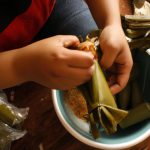


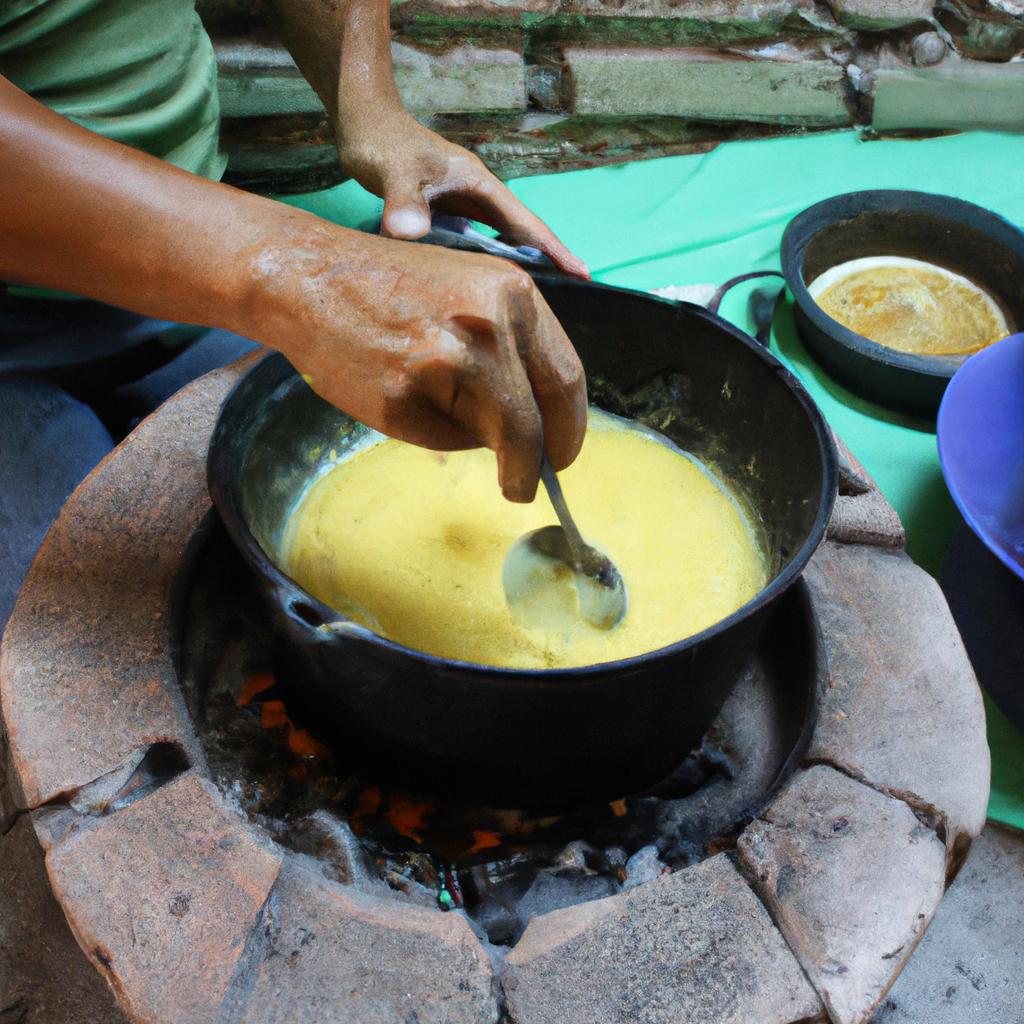

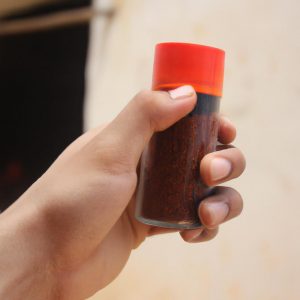
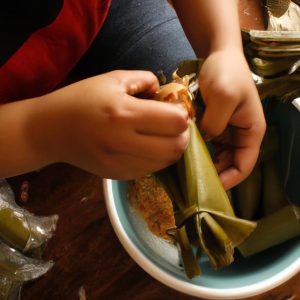
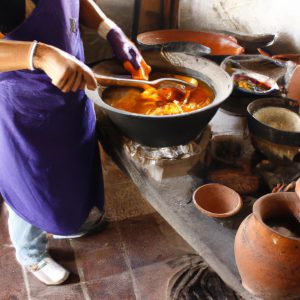
More Stories
Michoacan Cuisine: Regional Varieties of Mexican Food
Veracruzana Cuisine: Regional Varieties of Mexican Food
Tex-Mex: Regional Varieties of Mexican Food